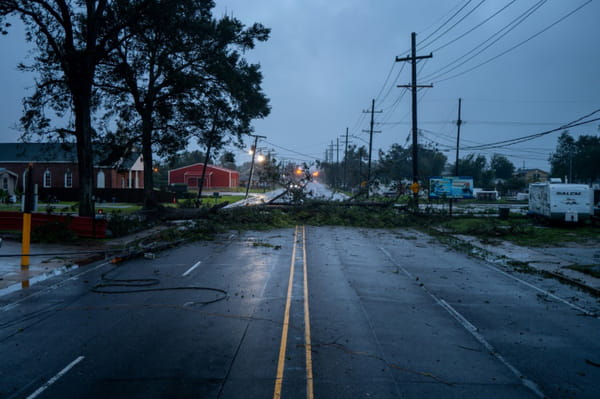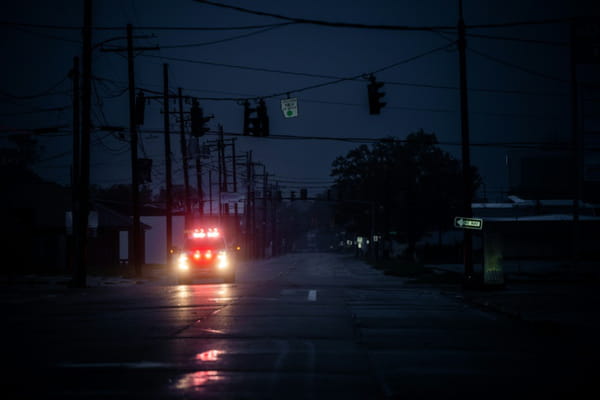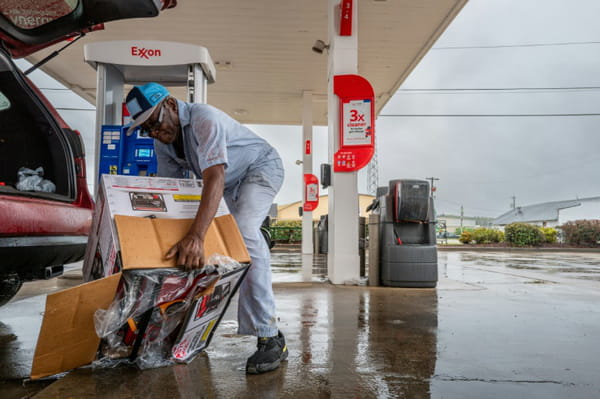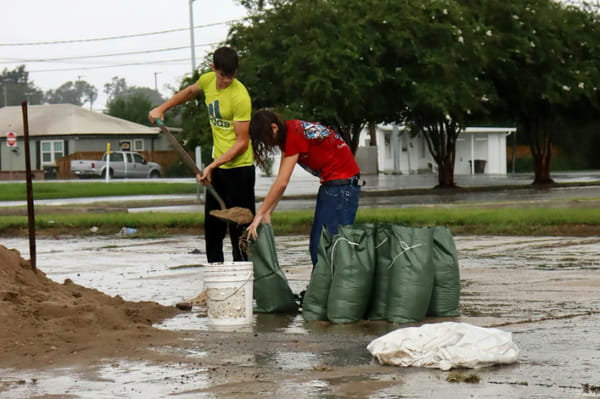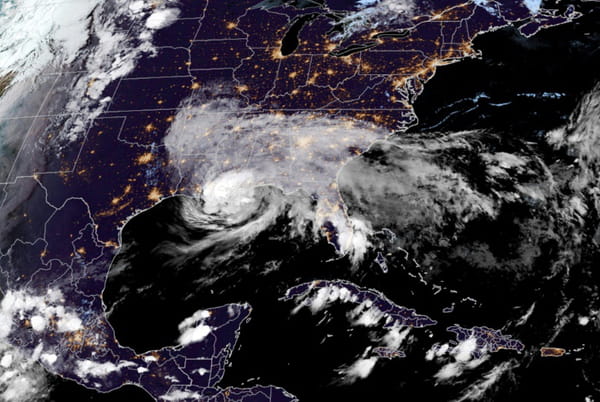Tropical Storm Francine – initially classified as a hurricane – is moving inland on Thursday land in the southern United States, leaving many residents without power and raising fears of severe flooding. Local television stations broadcast images of towns swept by the storm, with some streets flooded and residents protecting their properties with sandbags.< /p> Trees fell across a road in Houma as Hurricane Francine passes through Louisiana on September 11, 2024 © Getty – Brandon Bell More than 380,000 homes and businesses were without power in the morning in Louisiana, according to the poweroutage.us website, which tracks outages. Mississippi and Alabama, two nearby states, are also beginning to feel the effects of the storm, with more than 75,000 homes and businesses without power. “Heavy rainfall is spreading across Mississippi, Alabama, and northern Florida,” the National Weather Service (NWS) warned in its 1200 GMT bulletin. According to the U.S. Hurricane Center (NHC), the storm is expected to weaken as it moves inland. Francine made landfall in Louisiana on Wednesday afternoon (2200 GMT) as a Category 2 hurricane on a scale of 5, before being downgraded to Category 1, according to the NHC. A few hours later, Francine was upgraded to a tropical storm, with winds of 53 mph (85 km/h), causing sea level rise of 3 to 5 feet (1 to 2 meters) and torrential rains in parts of Louisiana, Mississippi, Alabama and Florida. The New Orleans metropolitan area was particularly exposed and the mayor had called on residents to stay indoors. This large Louisiana city had been particularly badly hit in August 2005 by Hurricane Katrina, one of the deadliest in US history with more than 1,800 deaths. – Schools closed – A resident loads a generator into his car ahead of Hurricane Francine in Morgan City, Louisiana, on September 11, 2024 © Getty – Brandon Bell Across Louisiana, many communities have issued evacuation orders. President Joe Biden declared a state of emergency in the state on Tuesday, a move that will release federal funds to help local authorities. Schools and universities around the Louisiana capital of Baton Rouge closed Friday. In Houma, a small city southwest of New Orleans, residents bustled around the hurricane. “We want to make sure they have fuel for their generators and that they have basic necessities with them,” Alicia B., manager of a gas station that remained open, told AFP. Residents fill bags with earth to prevent water from entering homes in Houma, as Hurricane Francine passes through, on September 11, 2024 in Louisiana © AFP – Will McGrew In the streets, sandbags have been placed at the entrances to buildings to prevent water from entering. The state's National Guard said it was ready to intervene with 32 helicopters, 387 vehicles and 87 ships mobilized to provide assistance. Some 1.1 million liters of water are stored and ready to be distributed if needed, they indicated on X. Satellite image released by NOAA/RAAMB of Hurricane Francine over Louisiana, September 12, 2024 © NOAA – – The National Hurricane Center is constantly monitoring the storm, particularly in sending planes flying into its heart. According to forecasts from the American National Oceanic and Atmospheric Administration (NOAA) at the end of May, the hurricane season in the North Atlantic – which runs from early June to late November – should be particularly turbulent this year, particularly because of the heat of the oceans, which fuels hurricanes. This season has already been marked by three hurricanes, including Beryl and Debby, which have caused several dozen deaths. All reproduction and representation rights reserved. © (2024) Agence France-Presse
